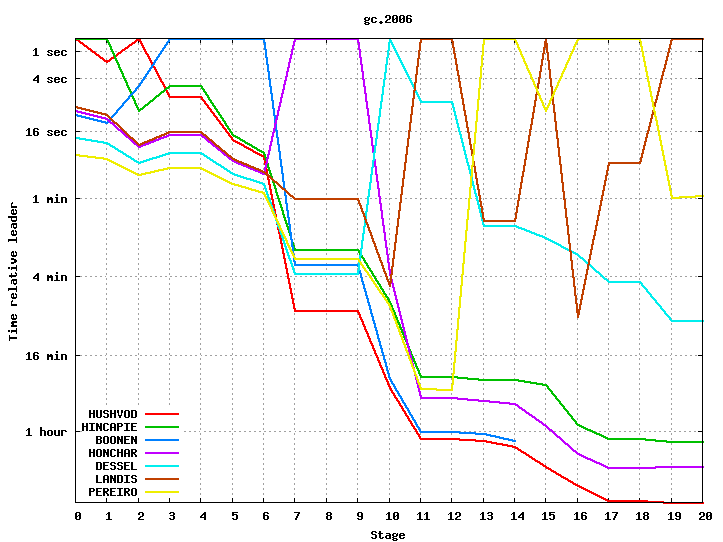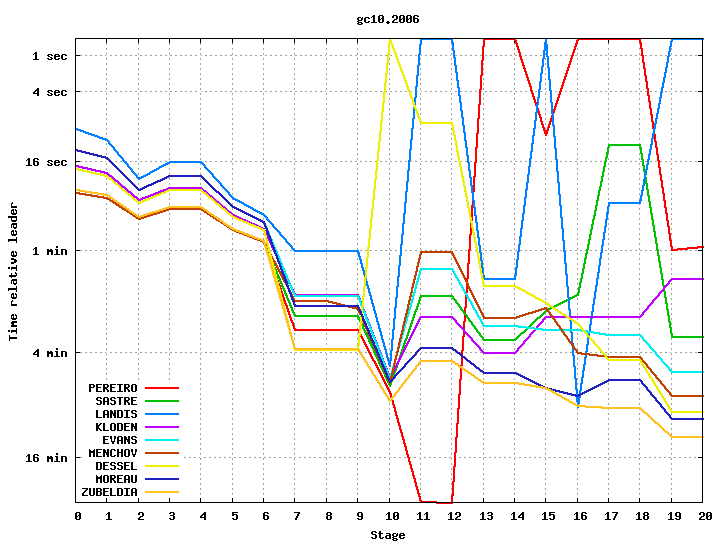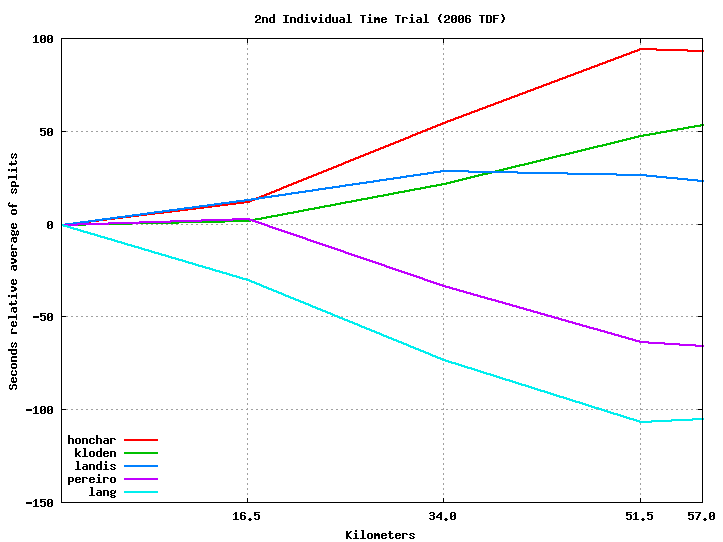
The Tour de France was expected to to be less focused than the previous several tours due to Lance Armstrong's retirement after his string of seven victories. So far (just before the Alps), it has found no focus whatsoever. Seven different riders have worn the yellow jersey, none for an appreciable length of time. The sprinters have followed expectations better, some held the yellow jersey early and then faded in the mountains falling more than an hour behind. On the other hand, Oscar Pereiro gained more than 1/2 hour to take the jersey from Floyd Landis. Bizarre stuff.
Tour de France "general classification" standings are generally presented as a list of riders and they times they trail the leader. Unlike many sports, the standings for each day are preserved for years in part because of the short "season" and in part because of the change in flavor of the race as it changes between flat stages, time trials, and the mountains. Especially the mountains.
While hard data is worthwhile, and is familiar to the standings kept in other sports, it's still interesting to see the change in standings over time. I've done this for the 2004 Boston Red Sox, they year hell froze over and they won Major League Baseball's "World" Series. It appears similar treatment of le Tour is also interesting. While baseball's standings are based on games ahead or behind and fit in a fairly small spread, time gaps of seconds are important in the GC despite the wide range in the standings or even the big changes between stages.
Still, we can create interesting graphs. Here are the GC standings after each stage for the riders who have worn the yellow jersey:

The vertical time axis is logarithmic based on time behind (the leader is given a slight time behind since the logarithm of 0 is infinite). The result shows positions differences of a few seconds among leaders and still captures faded sprinters left far behind on the mountains. It does not show a few seconds between riders several minutes down in the standings. Sometimes these are important, but usually are not. The 8 second difference between Floyd Landis and Cyril Dessel during stages 11-14 is very big for stages 11 and 12, and very small for stages 13 and 14 when Landis was 1'29" behind Oscar Pereiro.
However, the relatively small time losses for some sprinters in those stages are still visible.
Here's a look at the performance of the top ten riders (as of the end of stage 17):

Here's the performance of the top five riders in Stage 19, the second Individual Time Trial, the one where Floyd Landis regained the yellow jersey. The times are relative the average of each split time instead of relative the lead time:

Contact Ric Werme or return to his home page.
Last updated 2006 July 22.